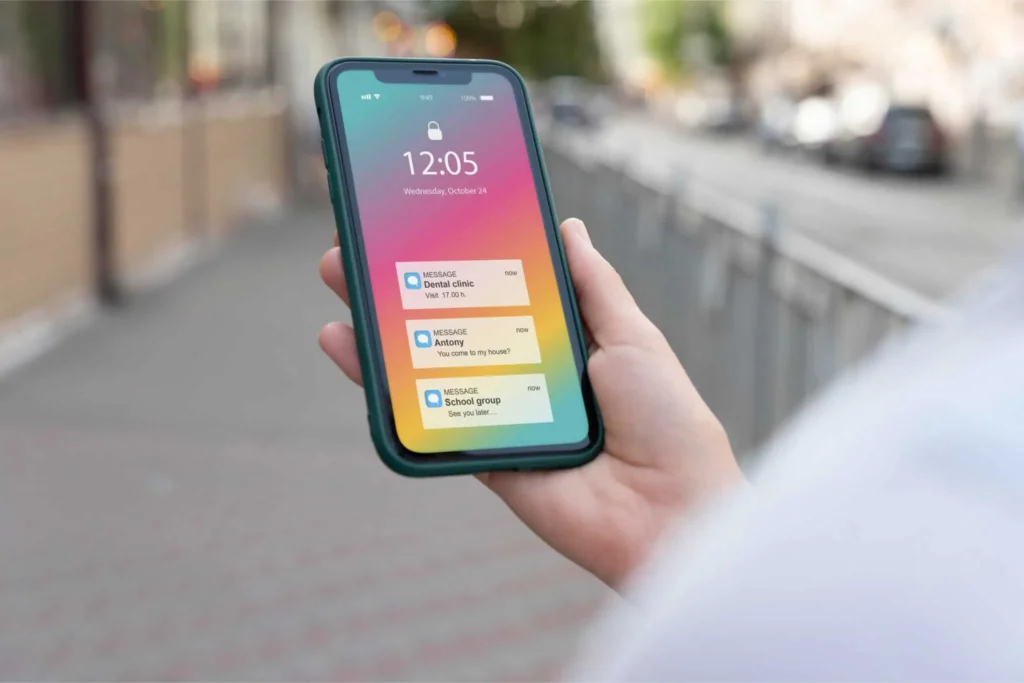If you want a powerful way to engage your customers, push notifications can help you to do this. When you deliver personalized messages they stay informed and connected. This helps to increase their loyalty and the growth of your business. It is important to integrate push notifications in iOS apps using key steps and best practices.

Image Credit: Freepik
What is a push notification?
Push notifications are small, pop-up messages you can send to the device of a user by using a mobile app. Unlike other communication channels, such as email, they engage users in real-time. You can use them to convey updates, promotions, reminders, and much more. They usually contain a title, and a message and can contain other elements like a URL, image, or emoji. When using Apple OS, these may appear a little different. You can also use push notifications on macOS.
Our phones are an essential part of our lives and we keep taking multiple photographs every day for work and personal use. These are for memories and we take numerous pictures on every occasion. Sometimes our phones get cluttered with these and we want to delete multiple photos together. You can find valuable information by looking at the article and following the simple steps. It will not only free up the memory of your phone but also help you find useful information. Whenever you need a particular photo, you don’t have to scroll through thousands of photos.
The various types
Push notifications are mainly either transactional or marketing-related. Transactional notifications often contain the necessary information that users are expecting.
Transactional can include:
● Registration confirmations
● Order confirmations
● Welcome messages
● Delivery times and updates
● Password resets
Marketing ones can include:
● Special offers and deals
● Promotions
● Sales
● Special events
Rules when using push notifications
You shouldn’t send sensitive personal or confidential information in a push notification. The first one you must follow is that you shouldn’t use them for marketing purposes unless customers have opted in to receive them. You must also provide a way for them to opt out if they no longer want to receive them. Abuse of push notifications could result in a user deleting an app and this will hurt your main purpose of using them.
Apple Push Notification service
The Apple Push Notification Service (APN) works on the back-end to trigger notifications. You must also use a server provider that communicates with the APNs, verifies the user, and triggers the notification.
The APNs must know the address of a device before they can send notifications to it. This takes the form of a token that’s unique to the service and to your app. You can’t use the token for any other app. When you register your app, you will receive your device token every time the app launches and you will forward it to your server provider. Your server will include the token with the communications it sends.
Enable push notifications in iOS apps
The process of integrating push notifications into your app iOS can be challenging. To set up push notifications you will need an Apple Developer account where you can create a new iOS project.
You will need to set up a development SSL certificate that you can generate on the Apple Developer Portal. This allows for a secure connection between your app and the APNs.
On the App Developer portal, you will configure the necessary App ID and provisioning profile. Your App ID must have push notifications enabled and the provisioning profile should include your App ID.
After creating your app, you need to enable the push notification service. Select the app target and go to the Signing and Capabilities section. When you select the plus button you can find and add Push Notifications.
The coding stage comes next. You will need to request the user’s permission to send push notifications. Prompting the user to grant permission will involve using the UNUserNotificationCenter API.
Going to the AppDelegate.swift file and adding a function called registerForNotification will request and authorize the notification service. Further coding is necessary to receive the device token.
Implementing the necessary code allows you to handle push notifications. You can customize the content of these to give users a personalized experience.
The test stage
You can use the Delivery Log in the Push Notification Console to get insight into what happens when you send notifications. To access the information you will need to use an apps-unique-id that the APNs return in response to every request. You can then handle any feedback or errors you receive from the APNs.
Conclusion
Successfully integrating push notifications into an iOS app can increase user engagement. It’s an important way to communicate with users and keep them informed. This can increase their loyalty and help you to retain them over the long term. Every phone user wants an enhanced experience so this is one of the key areas where you can set a strategic advantage for yourself.

